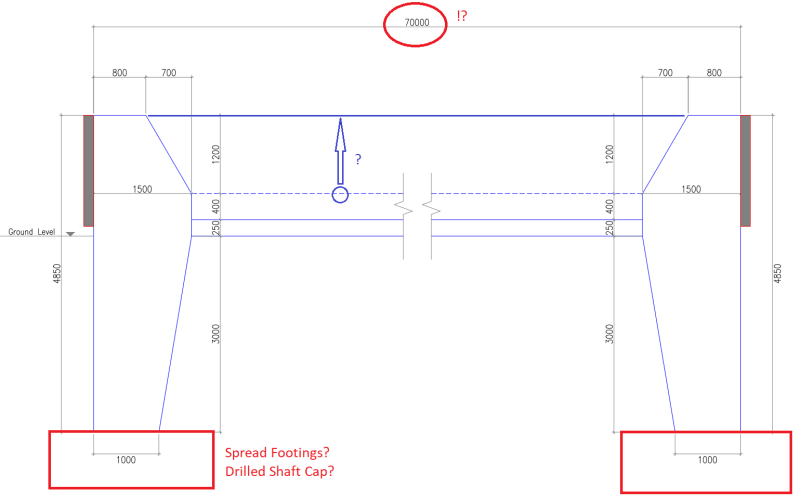precast123
Structural
I was designing abutments active end and passive end for prestressing. In the attached pdf 3m below ground part can be designed as short pile? Attached Structural concept will work since the load is very large approx 800 ton..? I am getting 30mm deflection for the abutments when ignoring bottom part below ground. I am analysing in sap2000 using shell element and was thinking to provide spring in abutment portion below ground to reduce deflection assuming this part as rigid pile (short pile). Note : this portion will be excavated and casted not drilled or bored.

